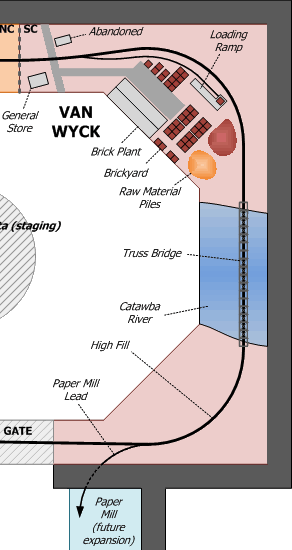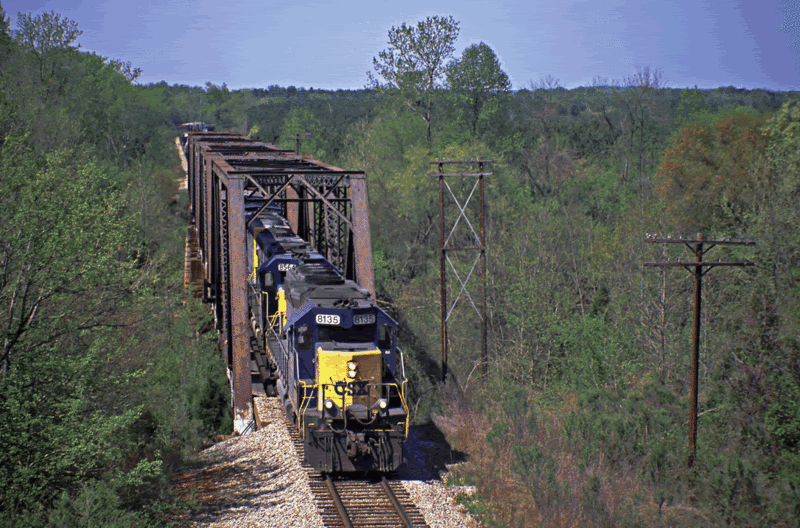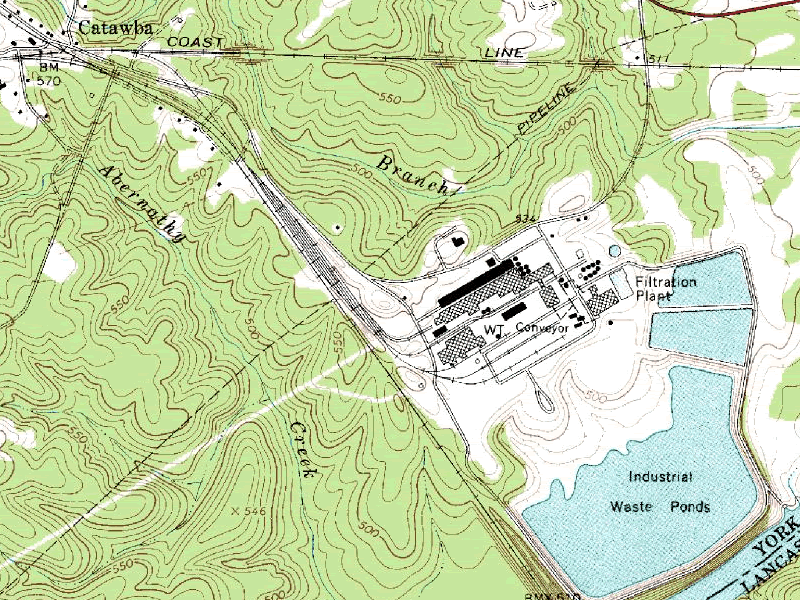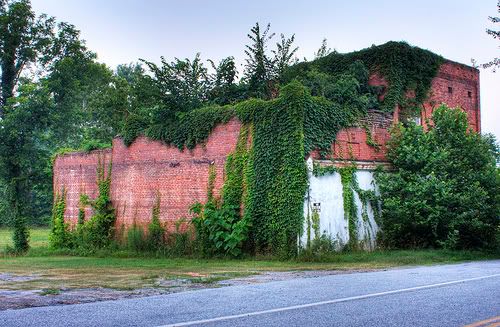 |
| Figure 1 Catawba River Bridge - ca. 1989 |
| John D. Jones |
Van Wyck is an unincorporated community just on the South Carolina side of the border with North Carolina. Like most other communities in this area, the town got its start when the Seaboard Air Line came through in the 1880s. However, unlike
Catawba to the south and Waxhaw to the north, Van Wyck did not get its name from the Indian territory that the railroad passed through. Originally called Little Waxhaw, the name was changed to Van Wyck by an agent of the railroad (the family name of the agent's wife was Van Wyck) to avoid confusion with the "other" Waxhaw to the north. In its early years, Van Wyck was the home to a depot (which is long gone) and a brick plant (which is still going strong today.) The original Ashe Brick Company of 1906 is today part of the Boral Bricks brand and still receives rail service from CSX. The most prominent railroad feature in the area has to be the four-span truss bridge over the Catawba River (
Figure 1). This bridge will be the signature scene of the entire lower level of the layout.
» Track Plan » Catawba River Bridge
» Catawba River Bridge |
| Figure 2 Catawba River Bridge - August 2009 |
| James Guffey/Zenfolio.com |
The Catawba River flows 220 miles from the Appalachians in North Carolina into the Wateree River in central South Carolina. It has been the lifeblood for agricultural and commercial development in the region for centuries. The SAL bridged the Catawba by constructing a four-span truss bridge set upon cut stone piers. S.C. state highway 5 crosses the river on an adjacent bridge, but I will only model the railroad crossing to avoid cluttering the scene. Even with the nearby highway bridge, the lack of sidewalks makes profile photos of the railroad bridge quite difficult to come by. However, views from the north can be captured from the highway overpass (
Figure 2). A few notable details can be observed from the two bridge photos. The cut stone piers can be seen supporting the individual deck spans, as can the abutment that supports the north end of the bridge. The telephone poles, though not in service, have a distinctive look and will add character to the scene. Also, notice how the long trains disappear into the curve in the background; this same track geometry will be present on the model. Finally, notice the difference in the overall color of the bridge spans. In the 1980s photo, the bridge appears to be a nice shade of dark gray; most likely following a recent paint job. In the 2009 photo, however, the bridge is almost completely covered by rust, with just traces of the gray color showing through here and there. This will allow flexibility when choosing an actual color for the model.
» Paper Mill |
| Figure 3 Paper Mill near Catawba, SC - July 1968 |
There is a massive paper mill between the town of Catawba and the Catawba River. Today, this mill is operated by Abitibi-Bowater, although this multinational corporation was obviously not the owner in the Seaboard era. A bit of additional research will be required to identify the lineage of this mill. The paper mill at Catawba is a traditional sprawling complex that is commonplace among the paper industry in the southeastern United States. There is a large pulp yard (pulp wood is received via truck in 2009), chippers, a digester, production building and various warehouses. As expected, spur tracks seem to go everywhere. Rail service is provided by both CSX and Norfolk Southern (SAL and SOU in 1966), and there is a large yard adjacent to the plant as can be seen on a topo map from 1968 (
Figure 3). This paper mill is the type of industry that could be modeled as a standalone switching layout. I have reserved a 10' long wall in an adjacent room for the mill to be modeled as a future expansion. For now, the lead track will terminate at the backdrop and will be long enough to allow a few cars to be switched by local trains.
» Brick Plant |
| Figure 4 Van Wyck, SC - June 2009 |
| George Holt/Flickr.com |
The brick plant in Van Wyck is a large production facility with multiple buildings for production and warehousing, as well as a large brick yard and piles of clay, sand and other raw materials used in the brick making process. There is a rail spur with a loading dock where box car loads of finished bricks are shipped out and a storage track across the mainline from the plant. However, to insure that I do not overcrowd the area around the Catawba River Bridge, I will model a simplified version of the brick yard along with one or two of the ancient buildings that dot the former "downtown" area of Van Wyck (
Figure 4).





